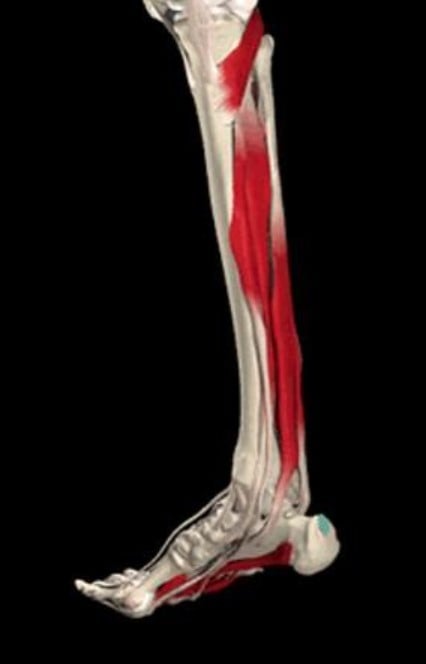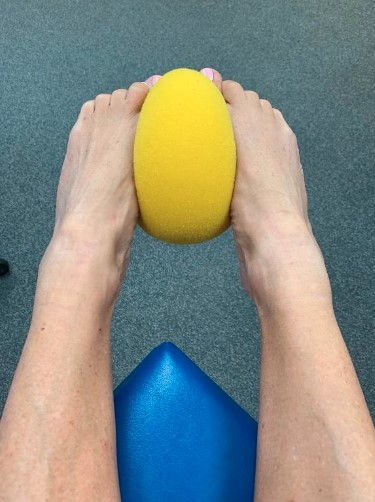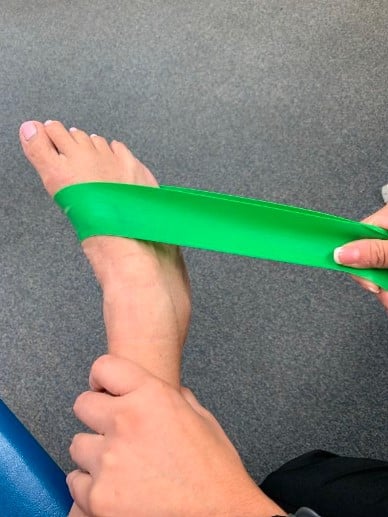By Brian Hoke
It is not uncommon to develop pain in the inner aspect of your ankle. This typically worsens when you are on your feet for extended periods. The main culprit in this problem is a critically important muscle known as the Tibialis Posterior (translated, it essentially means “back of the leg” muscle). This muscle starts under our primary calf muscle and runs down under the inner ankle, just under the inner ankle bone. The Tibialis Posterior then attaches to most of the bones in the arch area. When we activate this muscle, it helps keep the ankle and heel in the correct alignment, pulling the arch up into a stable position.

Pronation, or when our ankle and foot fall too far inward, causes the arch to collapse. The Tibialis Posterior tries to resist this excessive motion, but it can become injured and develop tendonitis when doing so. When this happens, standing and walking become increasingly painful at the inner ankle and arch.
We can strengthen this muscle to treat inner ankle pain and keep this muscle strong as a preventative measure. We can start with a simple foam ball held between our feet. Keep the ankles pointed downward, and at the same time, squeeze the ball with the inside of the foot. This activates the Tibialis Posterior muscle, so we hold 2-3 seconds and repeat this 10-15 times.


A second exercise is to follow a similar motion using an elastic band for resistance. We start the movement with our ankle pulled up, and the sole of our foot turned outward. Pull against the band’s resistance as you move the ankle downward and turn the sole of your foot inward. Hold the final position for 2-3 seconds and then slowly return to the start position. Do this exercise 10-15 times. Avoid letting the foot “snap back” to the start position since controlling our foot and ankle motion is the main task that this muscle does as we walk and stand.


A third and more challenging exercise for the Tibialis Posterior is done by standing on the edge of a step with a small ball held between our heels. Begin by squeezing the ball with your inner heels to do this exercise. When you do this properly, you will feel more weight on your outer three toes. Hold this position as you rise up onto the balls of your feet. Repeat this motion 10-15 times. This exercise will activate the calf muscles and the Tibialis Posterior on the inner ankle.


These strengthening exercises should help manage or resolve pain in the inner aspect of the ankle. It is also helpful to use footwear designed to match the normal anatomy of the foot. This reduces the demand on the Tibialis Posterior and may speed healing. If things do not improve, you may wish to consult with a foot health specialist. There are other exercise strategies available, and there are taping techniques that will also speed the healing of this area. Diagnostic tests, such as an MRI, might prove useful in determining the extent of the injury and damage to this muscle.
About the Author:
Specializing in orthopedic and sports physical therapy, Brian Hoke, DPT, SCS, has a particular interest in the biomechanical factors influencing lower limb rehabilitation. He is the owner of Atlantic Physical Therapy, a private practice in Virginia Beach, VA.
Brian is a board-certified Clinical Specialist in Sports Physical Therapy, a distinction achieved by fewer than 600 physical therapists in the U.S. He works with athletes of all levels—from recreational runners to elite professional and Olympic athletes. He has contributed chapters to two textbooks on the treatment of running injuries.
Brian is an avid educator, lecturing extensively in the U.S. and internationally. Since 1985, he has been a faculty member of the popular continuing medical education seminar, “When the Feet Hit the Ground, Everything Changes.” He co-developed and has taught the “Take the Next Step” course since 1990. In addition, he has been an adjunct faculty member of physical therapy programs at Old Dominion University and Touro College on Long Island, NY.
Brian’s expertise in sports physical therapy is a particular asset to Vionic’s athletic line of footwear. He and Phillip Vasyli have also collaborated to create a foot orthotic designed for problems with supination—when feet roll outward too much.

Leave a Reply